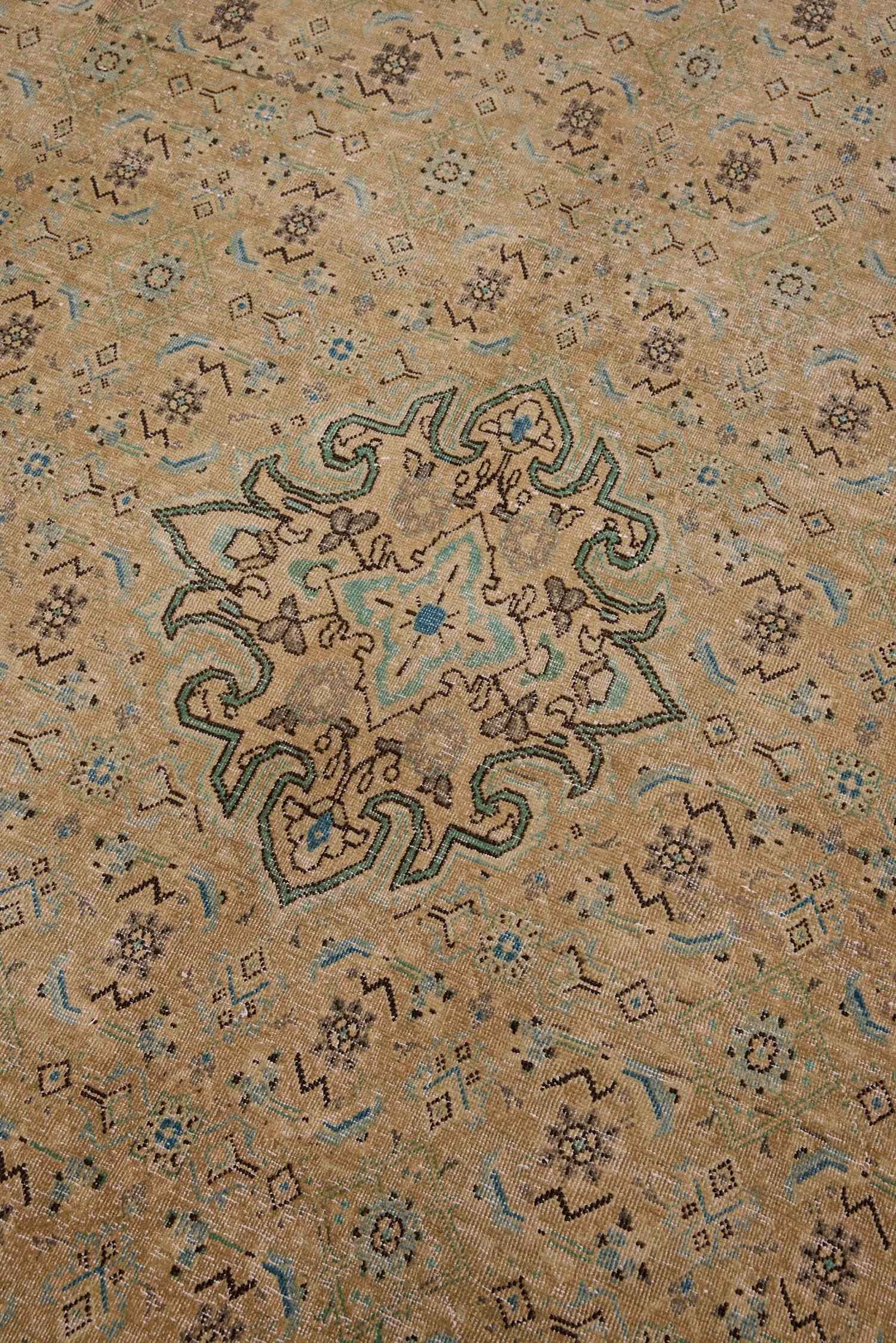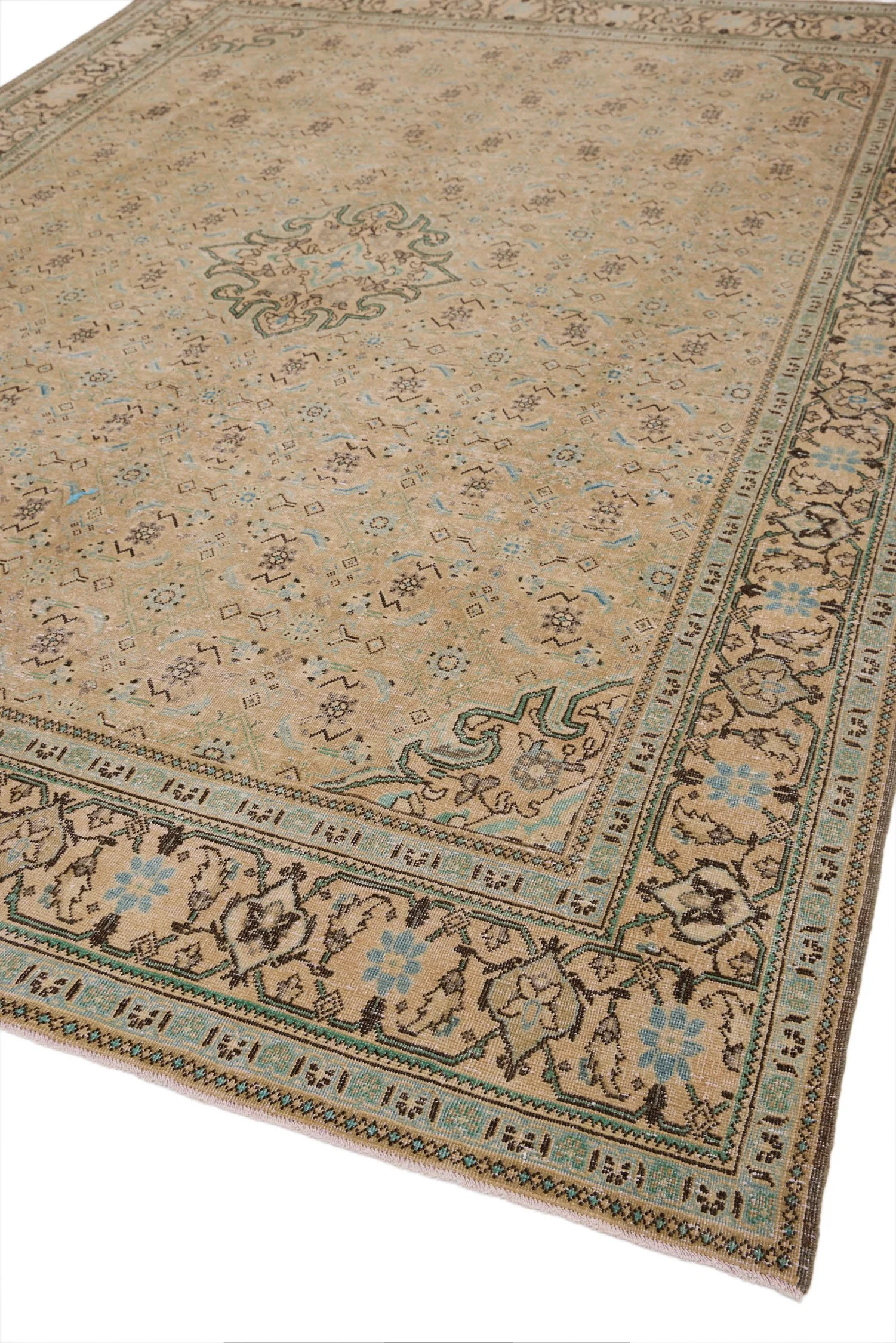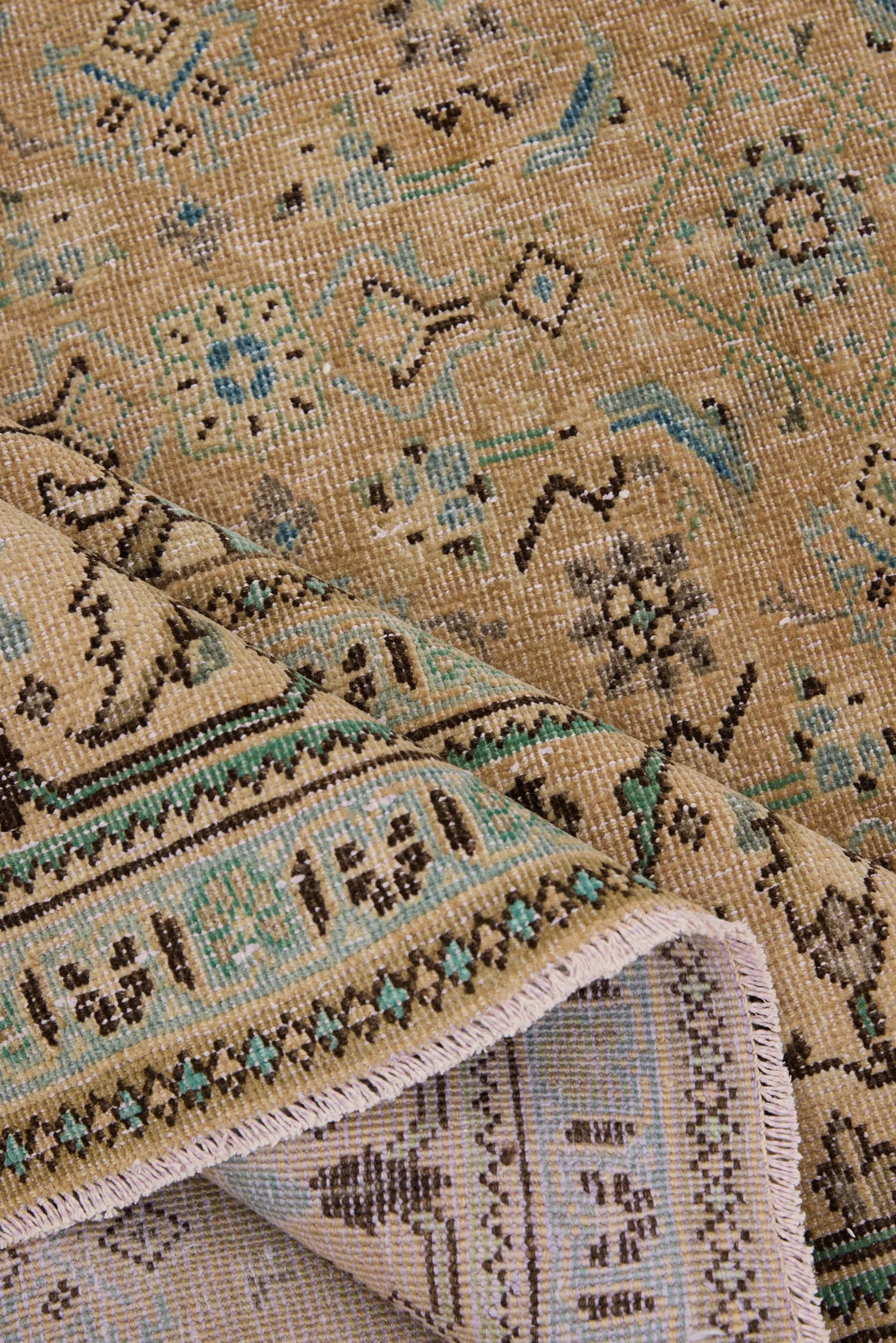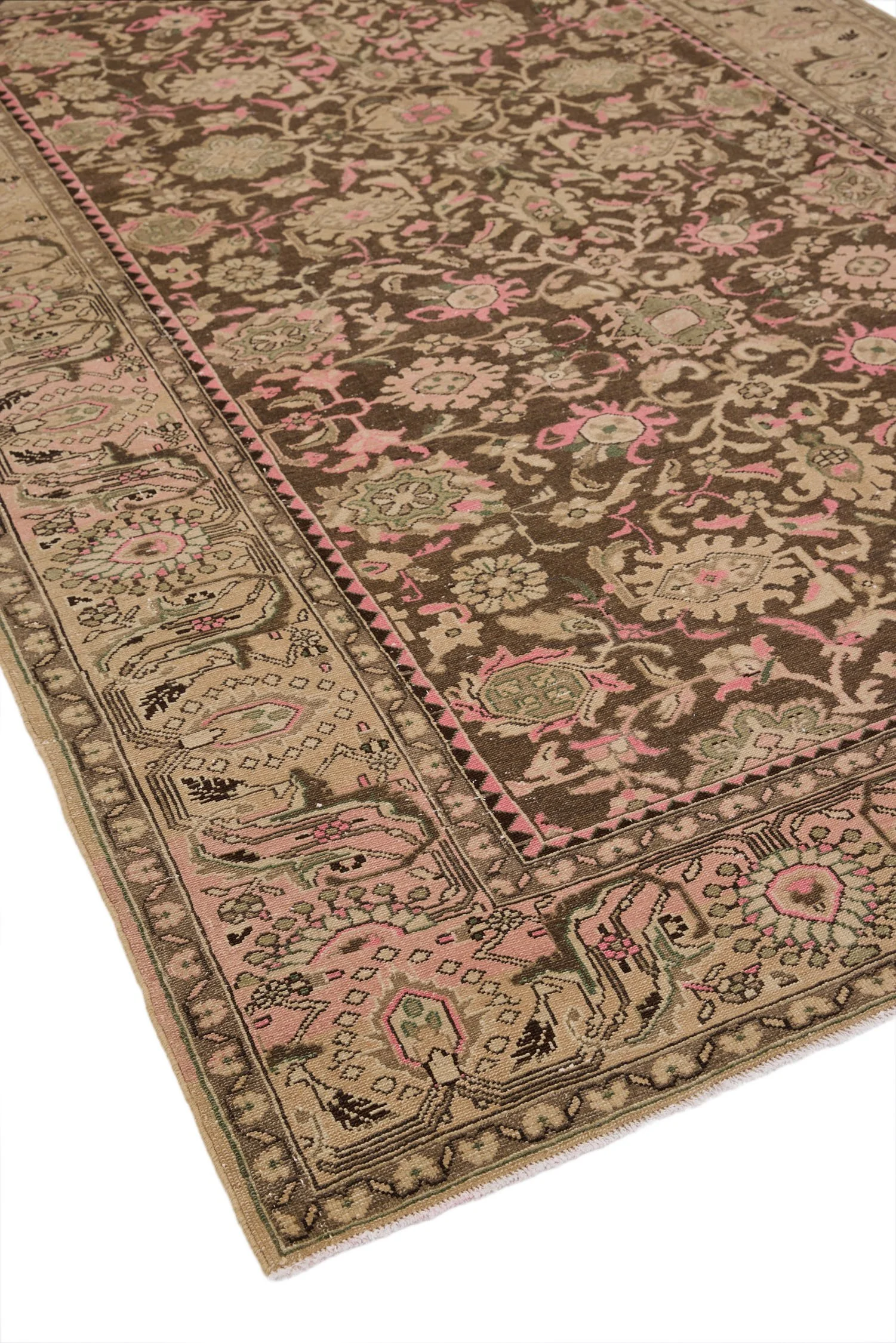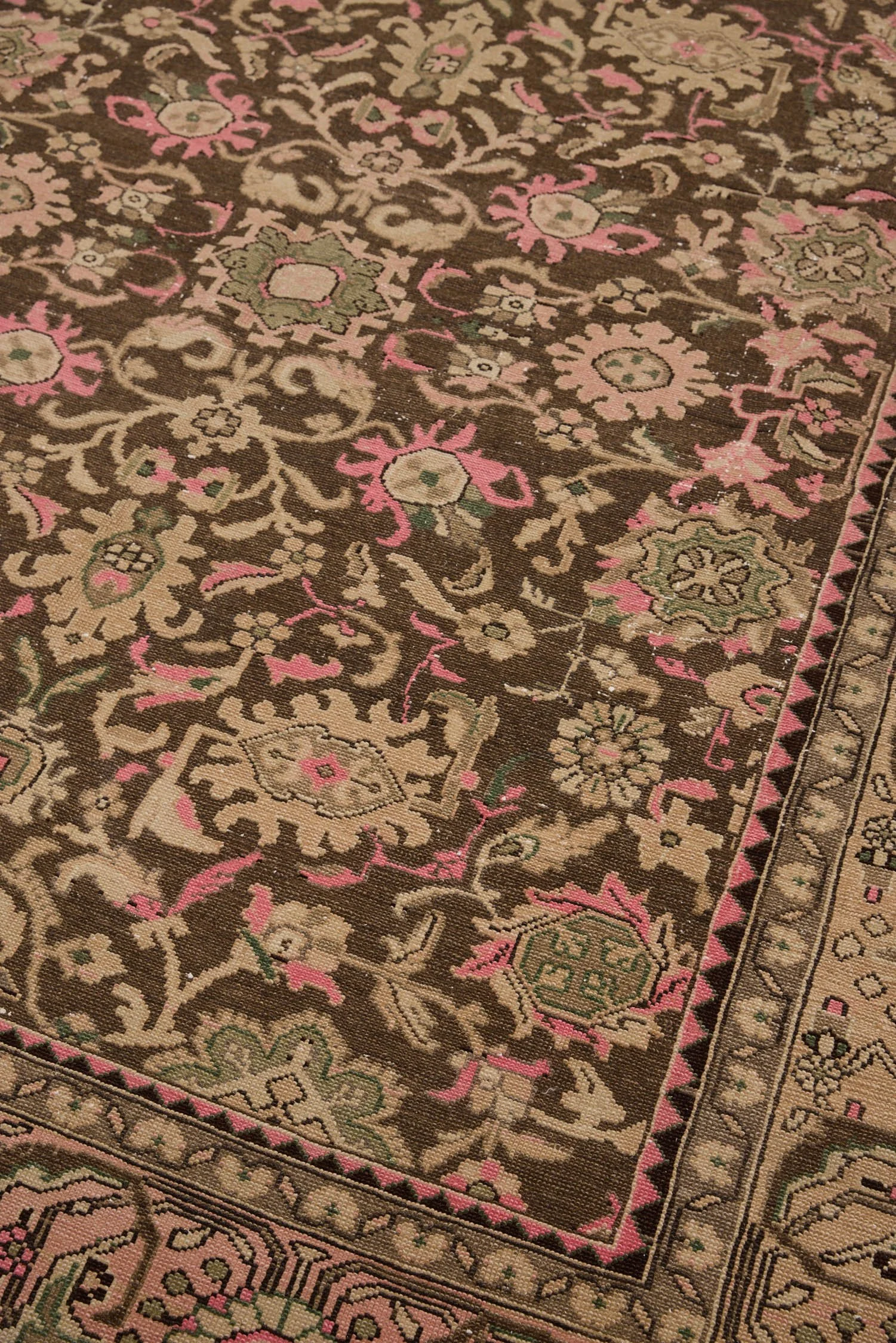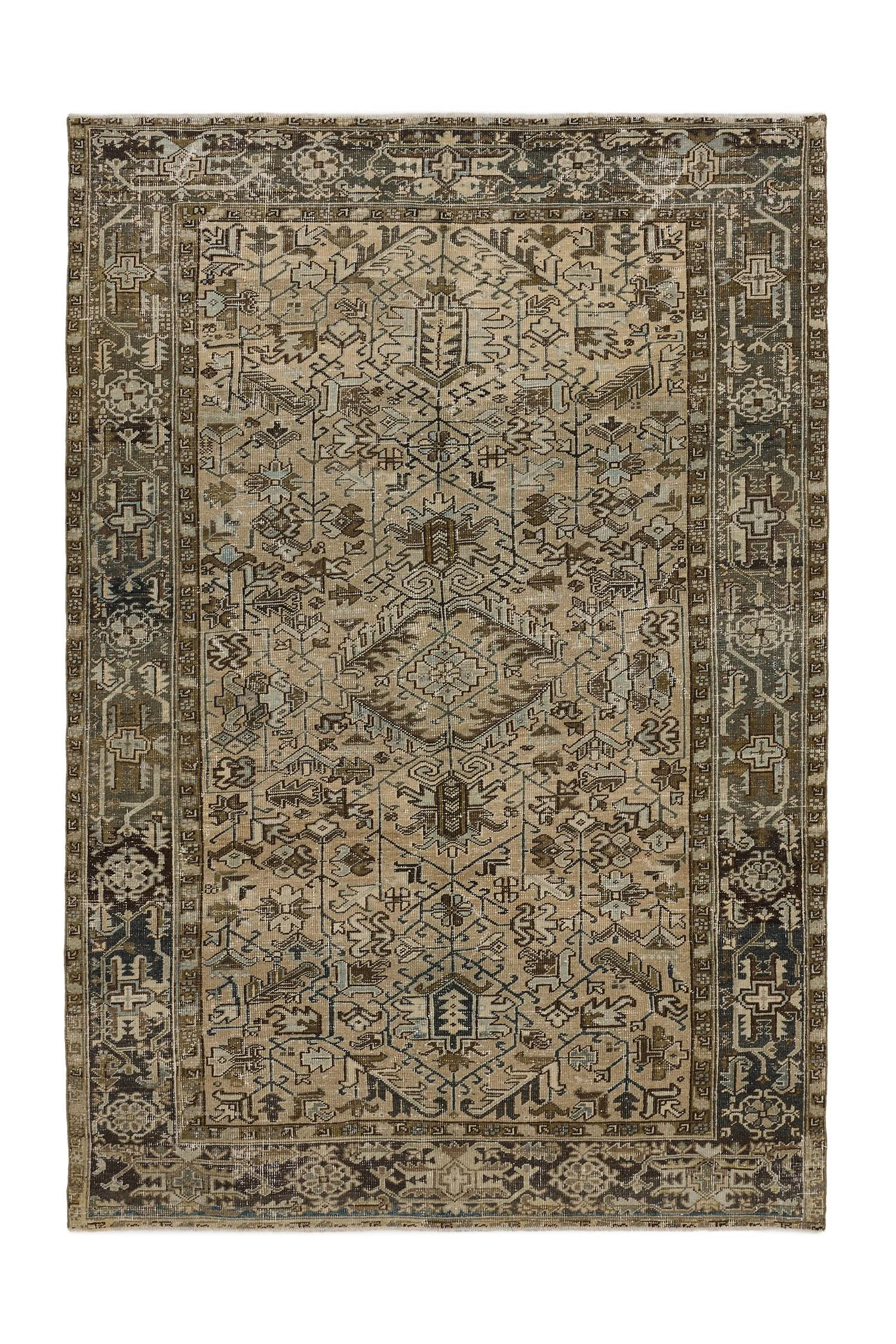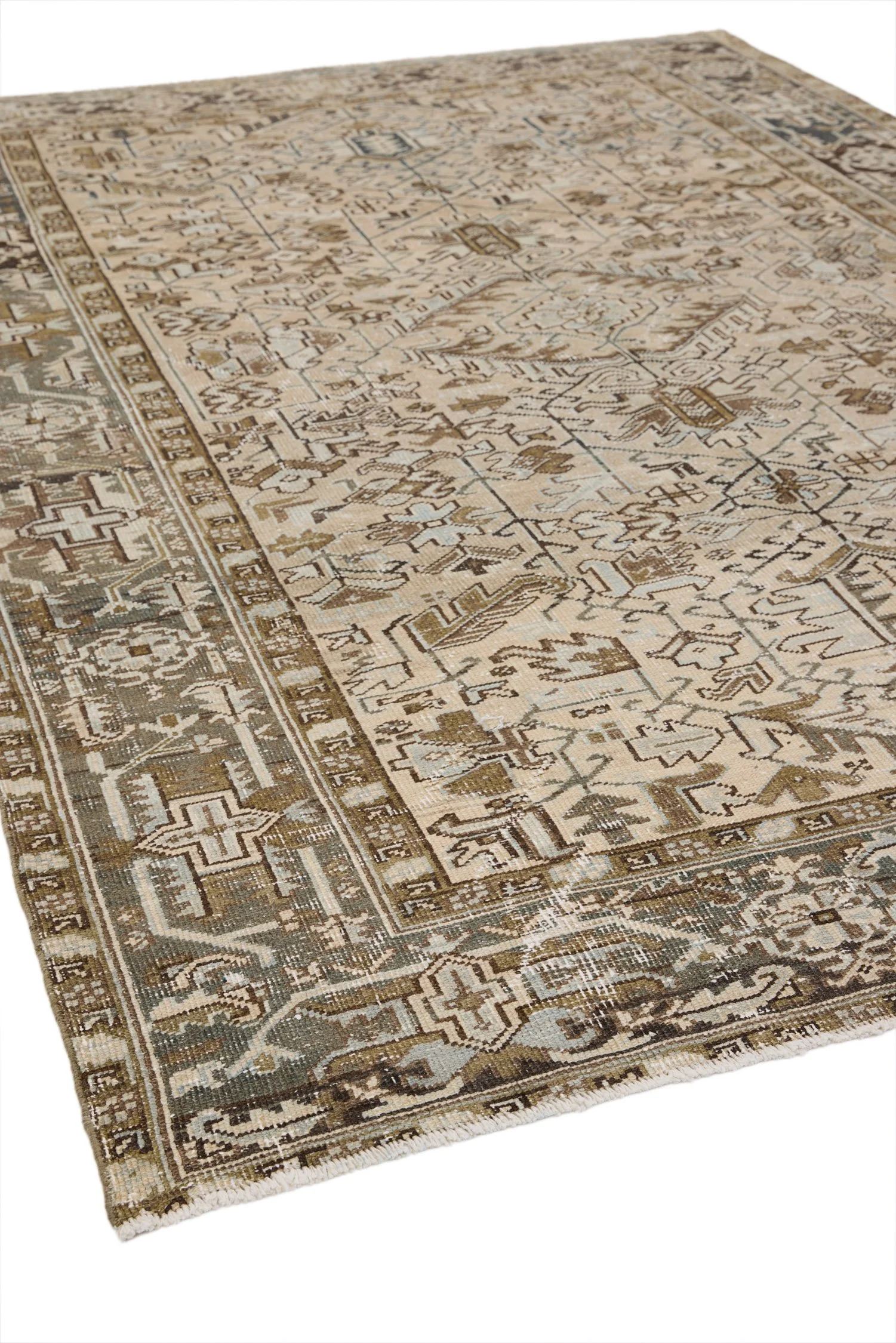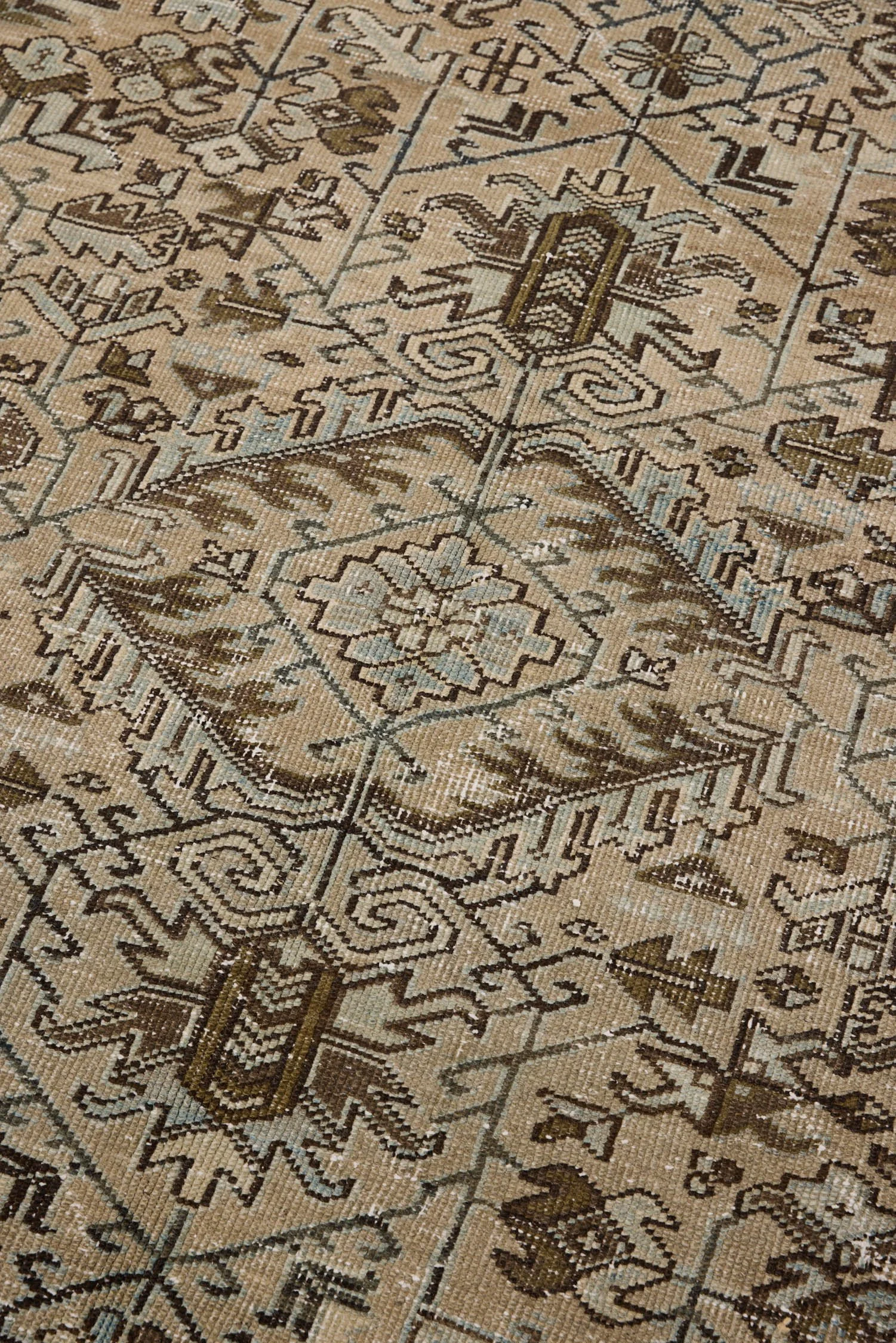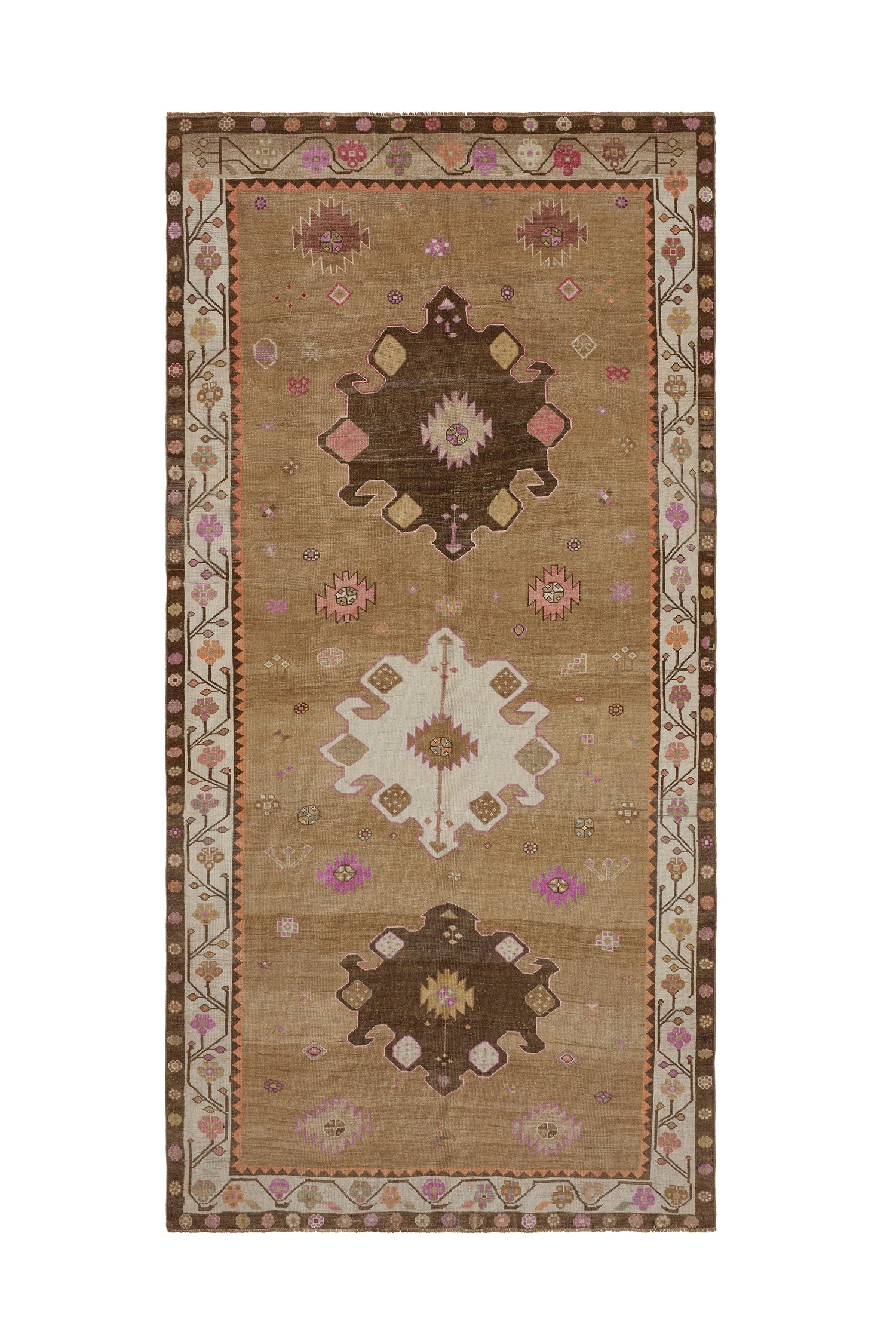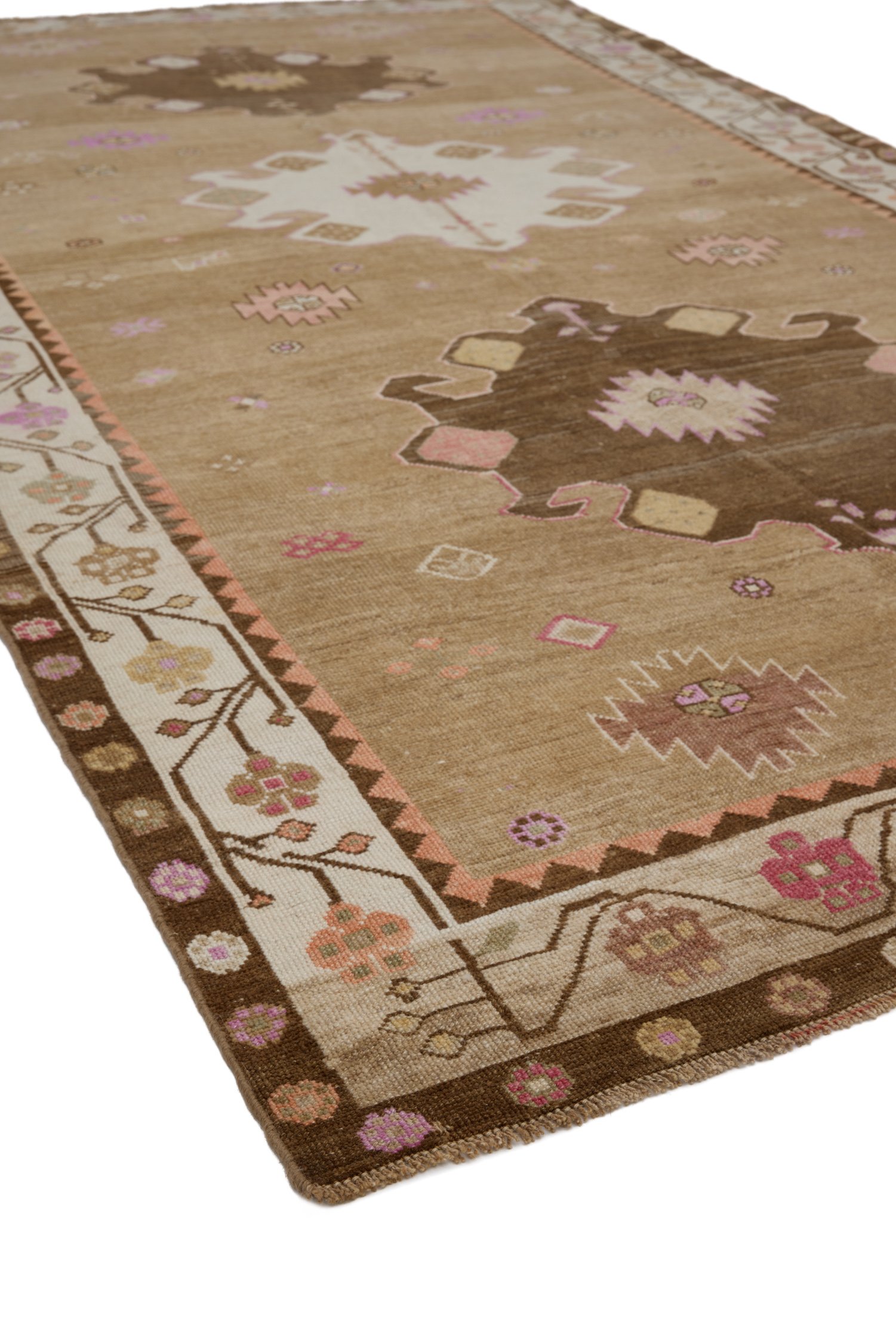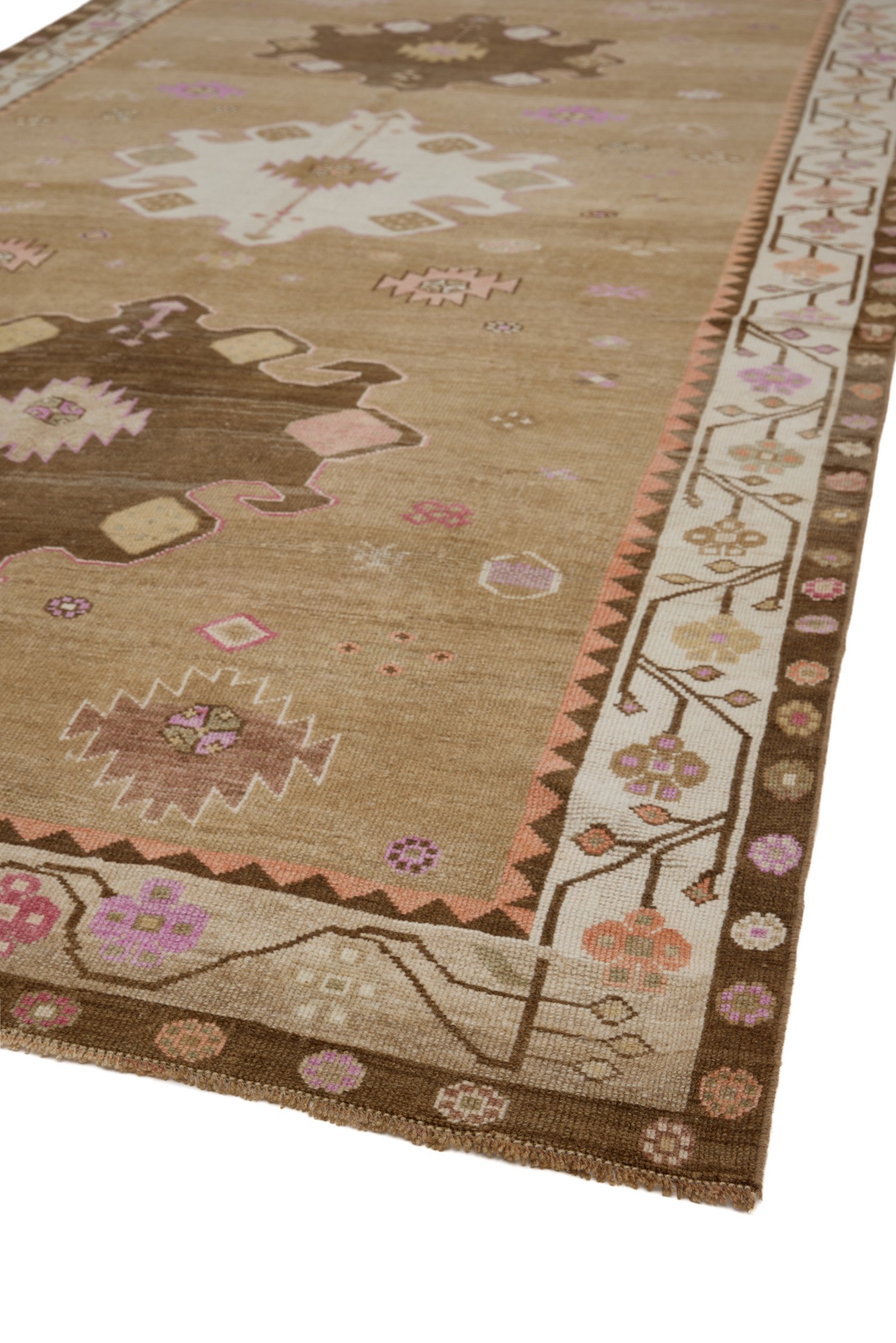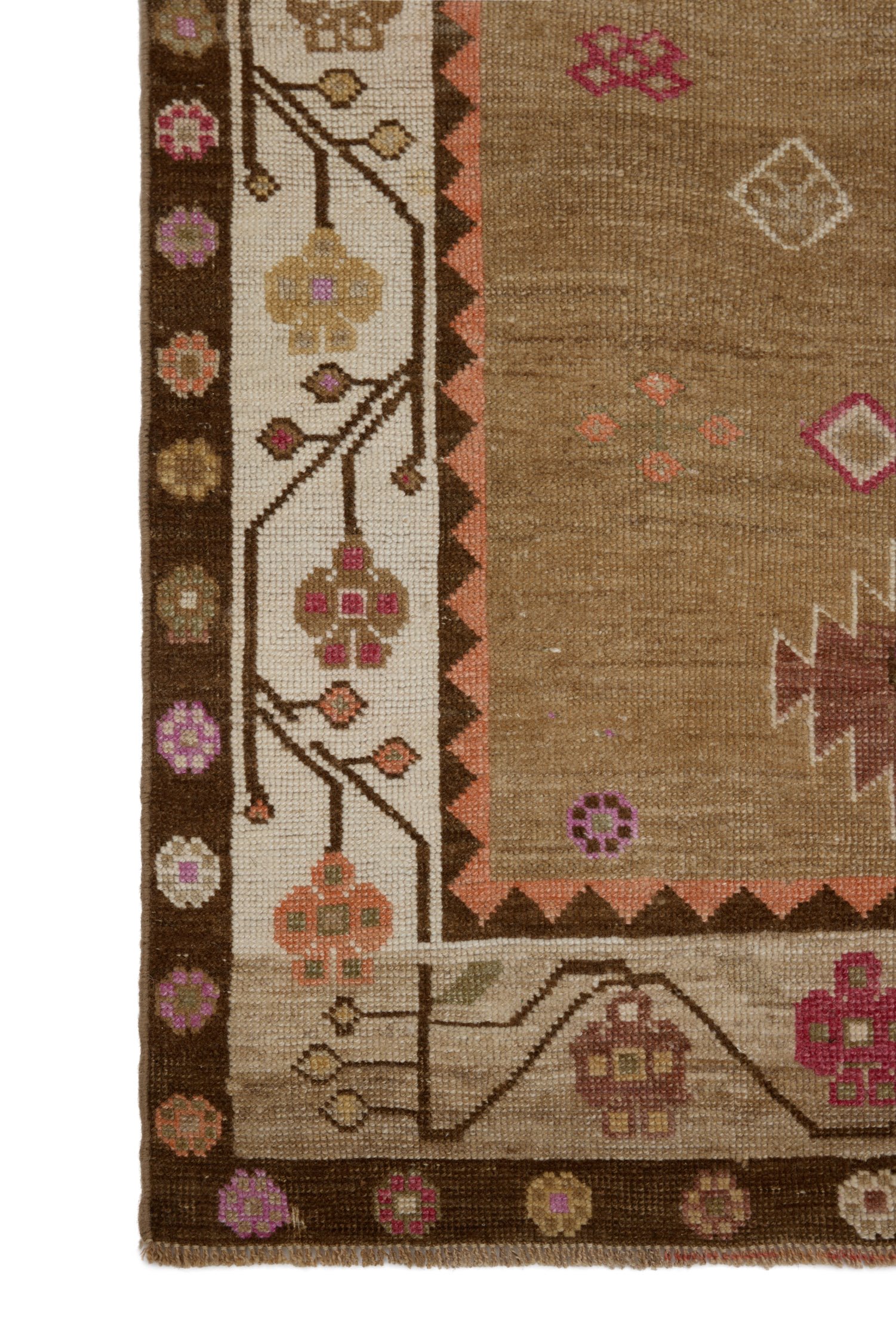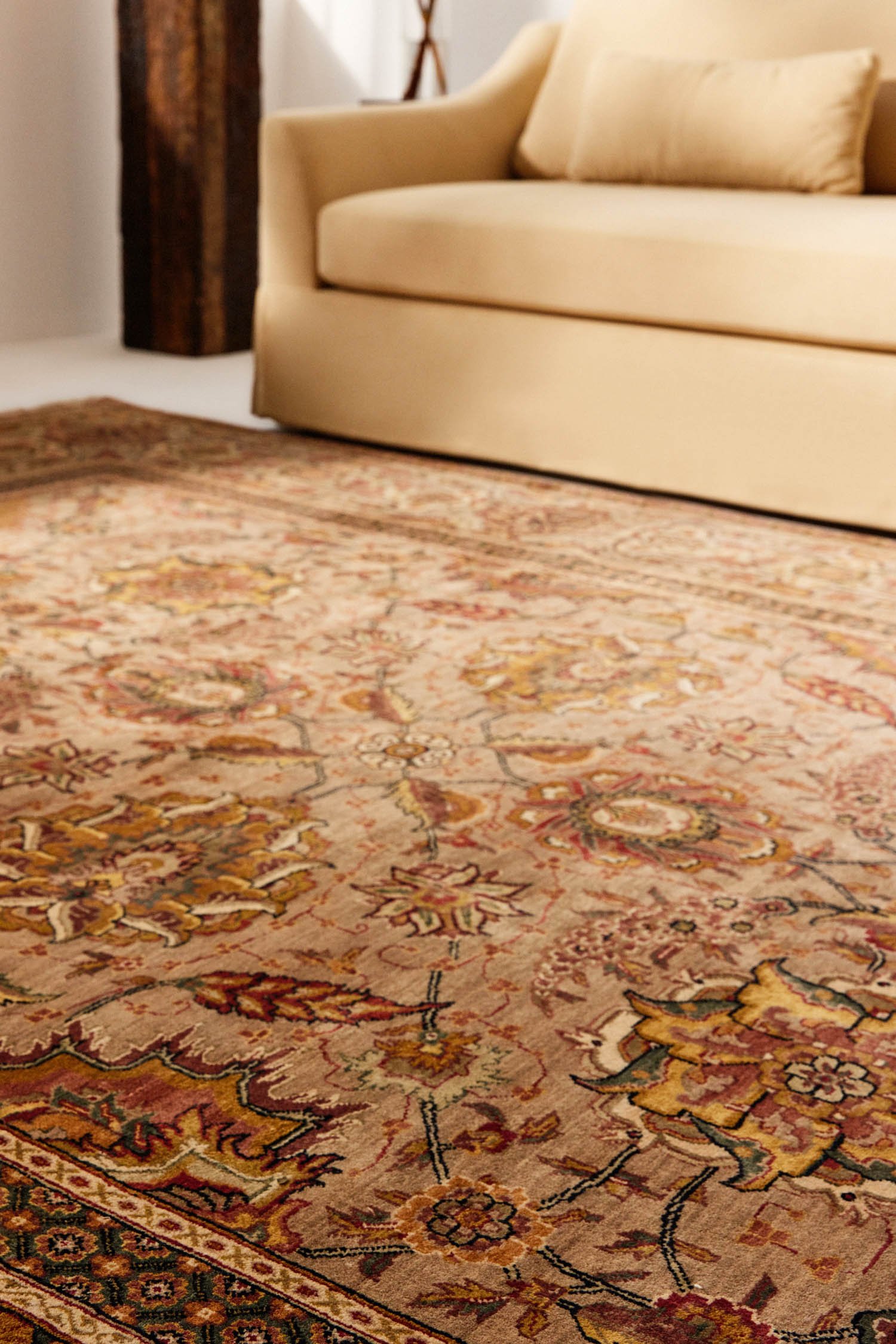Heritage and Craftsmanship
Tabriz has long stood as one of Persia's most celebrated weaving centers, where generations of artisans developed techniques that allowed for exceptionally fine knotwork and intricate pattern rendering. The city's workshops became known for their ability to execute complex designs with precision, often incorporating classical Persian motifs while maintaining a distinctive local vocabulary. These rugs earned recognition for their balanced compositions and the skill evident in every knot.
Design Elements
The herati pattern, sometimes called the "fish design" for its stylized leaves resembling swimming fish, creates an allover lattice that gives the eye multiple points of entry across the field. This particular example layers that traditional pattern with a central medallion whose curling vines demonstrate the artistic freedom Tabriz weavers exercised within classical frameworks. The olive and teal accents against the sandy beige ground create a palette that feels both grounded and dynamic, the colors having mellowed together over decades into a harmonious whole.
Placement
At 8'8" x 12'6", this rug anchors larger living spaces, dining rooms, or primary bedrooms with ease. The neutral foundation allows it to work within varied interior approaches, from spaces that embrace traditional furnishings to those leaning toward mid-century or contemporary aesthetics. The allover pattern means the rug reads beautifully from any angle, making it adaptable to different furniture arrangements.
Care Recommendations
To preserve the rug's beauty:
Rotate periodically for even wear
Vacuum regularly using a suction-only setting
Address spills immediately by blotting, never rubbing
Professional cleaning recommended annually
Avoid direct sunlight to maintain color integrity
Tabriz rugs represent a weaving tradition that valued technical mastery and artistic vision in equal measure. The herati pattern's enduring presence across Persian weaving speaks to its visual appeal, while the addition of distinctive medallion work shows how individual workshops left their signature on classical forms. These pieces carry history not as museum artifacts but as functional textiles that continue to bring beauty and warmth to contemporary living spaces.



